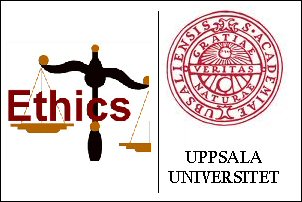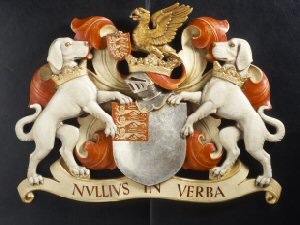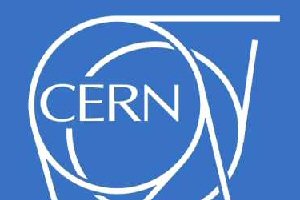
The motto of Uppsala University is “Truth through mercy and nature.”
June 4, 2013 – By Steven B. Krivit –
On May 27, Alessio Guglielmi, a researcher in the Department of Computer Science at the University of Bath, in England, published an open letter that addressed ethical questions about Uppsala University researchers involved in the promotion of Andrea Rossi’s Energy Catalyzer (E-Cat) device. Today, New Energy Times reports additional information that raises more questions about the scientific ethics of the Uppsala researchers.
The story began two years ago (full timeline of events here). On Feb. 23, 2011, Sven Kullander, an emeritus professor of physics at Uppsala University and chairman of the Swedish National Academy of Sciences Energy Committee, told a Swedish journalist that the public “must embrace” the Rossi claim. Kullander had not seen the Rossi device or tested it.
There hadn’t been and still isn’t any published peer-reviewed paper in a real journal to confirm the device. There hadn’t been and still isn’t any independent replication of the Rossi device. There hadn’t been and still isn’t any successful test of the Rossi device in any independent laboratory.
On Nov. 23, 2011, Kullander gave a public science lecture at Orebro University, in Sweden, primarily on the Rossi claims. John Olov Hampus Ersa Ericsson, a sociology student at Umeå University, in Sweden, attended the lecture and provided New Energy Times with his personal report of the lecture. (See New Energy Times article “ Hampus Ericsson Report on Kullander Lecture at Orebro.”)
According to Ericsson, Kullander said that he asked Rossi whether Uppsala University could independently test the device, with the requirement that all information would become public.
The failed test attempt took place in the fall of 2012. Kullander never publicly revealed anything about it.
On Dec. 19, 2012, Goran Ericsson, a professor in the Applied Nuclear Physics Division of the Department of Physics and Astronomy at Uppsala University, provided New Energy Times with detailed information about the attempted E-Cat test. New Energy Times did not report this information at the time because the Rossi story appeared to have already died out.
However, in May the story came back to life as a result of the manuscript submitted by Kullander’s colleagues to arXiv. (See New Energy Times article “Rossi Manipulates Academics to Create Illusion of Independent Test.”)
Here is the report we received from Ericsson:
I work at Uppsala University in applied nuclear physics. I have followed your coverage of the Rossi E-Cat story over the years and found it the best overall reporting. You have done a lot of nice groundwork. I especially like your video interviews with the Rossi, Levi and Focardi group some time back. I might not agree with your position on LENR in general, but I appreciate your honest way of approaching the issue.
On Dec. 17, there was a Swedish public service TV program on Rossi and “cold fusion.” I participated in a short sequence [See New Energy Times articles “Rossi Fools Swedish Public Television” and “Kullander and Essen’s Unscientific Behavior on Swedish Television“]. The Rossi story is quite big in Sweden, partly due to the coverage in the widely read Ny Teknik magazine. The TV program has generated discussions among colleagues and interested people.
From the comments I have received, two pieces of information might qualify to be included in your account of the Rossi story:
1) The more-detailed isotopic analysis by Kullander of the powder used in the E-Cat has been completed. Kullander verified this to me himself by e-mail in March. If I correctly recall his information, partly given to me orally, the final measurements [of Rossi’s catalyst material] were done at the Museum of Natural History, in Stockholm, using its mass spectrometry system.
The result seems similar to the preliminary results from the first tests in Uppsala, reported [not in a journal but] in Ny Teknik: no radioactivity, no transmutations, no deviations from natural abundances. Thus, there is no reason to assume that nuclear reactions involving protons and nickel have been involved. Although this is not a surprising result, I think it should be documented with your other information on this. I have written to Kullander asking for the report. He has promised since March to deliver these results, but I have received no reply. [June 7 addendum: Kullander sent the report to Ericsson several days later without any restrictions.]
2) According to a source of mine (more on this below), a complete E-Cat (unclear which variety) was delivered by one of Rossi’s associates (not clear who) to the Uppsala University accelerator center, the [Theodor] Svedberg lab, for testing. This happened after the summer of 2012, between September and October.
The lab crew had prepared for quite extensive measurements, according to their best efforts, which are quite good, as you can imagine, including logging of power input, water flow in and out, temperatures, radiation, and using a heat exchanger instead of relying on assumptions on the steam quality.
According to my source, as the Rossi associate was setting everything up, a “poff” was heard, and the associate declared that the E-Cat was not working and left. No measurements were done. It is possible, but not certain, that this E-Cat is still in Uppsala.
The person who gave me this information was, until recently, employed at the Svedberg lab and left because the lab is closing down in a couple of years and all personnel have been asked to start reviewing their positions. There was no conflict behind his leaving, simply the issue of securing his next employment position. He is still working at the university. He is very credible.
Furthermore, it is a well-known secret among many people close to the accelerator lab that these tests have been going on, so I have the same information from other sources, although they have not wanted me to say anything. There is apparently an issue with confidentiality at the Svedberg lab, so the people involved have been asked not to talk about this.
I imagine you want to verify this information. If so, I would suggest going to the source – call or write to Sven Kullander himself – and to the director of the Svedberg lab, Bjorn Galnander. Of course, it is not clear what they will be willing to say on these issues.
Yesterday, New Energy Times e-mailed Galnander and Uppsala University media representatives and asked whether Galnander had any comments about the attempted test of the E-Cat device by staff at the Uppsala accelerator center. We also asked him to comment on the university’s position on open discussion of the test. He did not respond.
We also sent the same questions to Kullander and the Uppsala University media representatives.
Kullander responded by e-mail yesterday. He declined to provide any information about the test, and he denied directing any researchers to withhold information about the E-Cat test from the public.
______________________________________________________________
Questions? Comments? Submit a Letter to the Editor.






